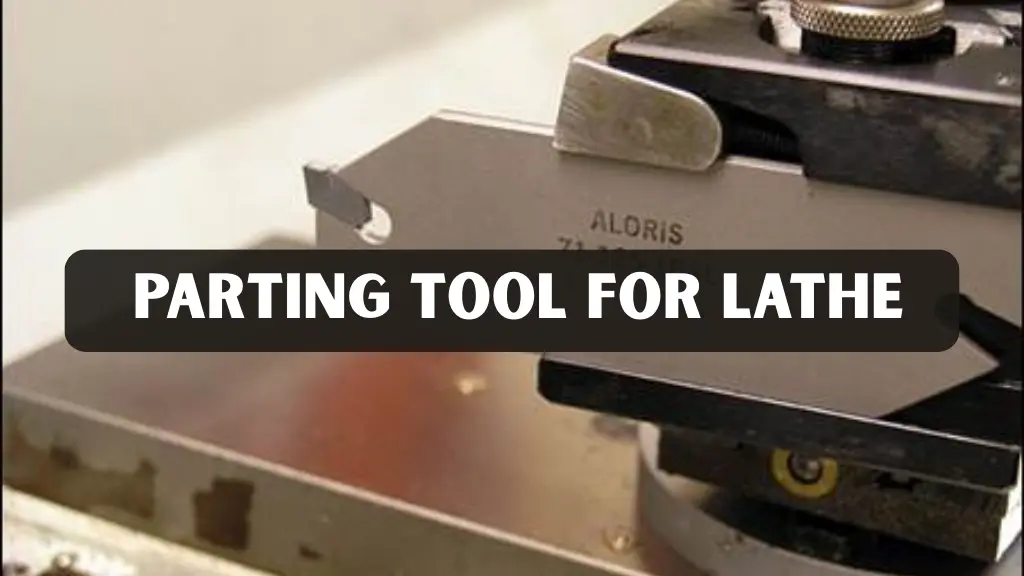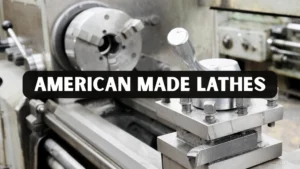For woodworkers and metalworkers, precision is the foundation of quality craftsmanship. Among the most critical tools in a lathe setup is the parting tool for lathe, which play a key role in separating finished pieces from raw stock and cutting grooves for functional or decorative purposes. Despite its importance, many operators underestimate its impact on workflow efficiency and accuracy. Proper selection, handling, and maintenance of parting tools not only improve the quality of your work but also enhance safety by reducing the risk of tool breakage or material damage.
Experienced machinists and woodworking professionals emphasize that understanding the materials, shapes, and cutting angles of parting tools can dramatically improve results. High-quality tools, such as those made from carbide or high-speed steel, combined with correct techniques, ensure consistent cuts and reduce wear over time.
By following best practices informed by industry experts and real-world workshops, both hobbyists and professionals can maximize their lathe’s potential while maintaining precise and repeatable operations.
What is a Parting Tool for Lathe?
A parting tool for lathe is a specialized cutting instrument designed to slice precisely along the lathe’s axis. Unlike standard cutting tools, it is narrow, rigid, and extremely sharp, minimizing bending or deflection during operation. These tools are widely used to cut workpieces to exact lengths, create grooves, or form recesses for functional and decorative purposes. Professional machinists stress that using the right tool ensures consistent results and prevents errors that could waste both time and material.
Parting tools are available for both metal and wood lathes, with variations in blade geometry and material to suit the intended application. High-speed steel and carbide-tipped tools are commonly recommended for durability and precision. They are also essential for preparing stock material for further machining and assembly. Experienced woodworkers and metalworkers agree that careful selection, proper technique, and regular maintenance are key to achieving clean, repeatable cuts on any lathe project.
Why You Need a Quality Parting Tool
Investing in a high-quality parting tool can save significant time, reduce material waste, and elevate the overall quality of your projects. Precision cutting allows craftsmen to maintain consistent width and depth in each cut, ensuring repeatable results and professional finishes. A sharp, well-built tool minimizes deflection, reducing chatter and vibration during operation. These benefits are crucial for both hobbyists and professionals seeking reliable, efficient lathe work.
Durable parting tools are typically made from high-speed steel or carbide, which resist wear and heat, lowering replacement costs over time. Their versatility allows operators to work on a wide range of materials, from softwood and aluminum to brass and steel. Experienced lathe operators emphasize that using a low-quality tool can ruin a workpiece in minutes, making proper selection essential. By choosing the right parting tool, craftsmen ensure consistent performance across multiple projects..
Types of Parting Tools
When selecting a parting tool for lathe, understanding the different types is critical for achieving precision and efficiency. Standard single-edged parting tools are the most common and versatile option, suitable for general-purpose cutting tasks. They work well for separating small to medium workpieces and creating shallow grooves or recesses. These tools are ideal for soft metals such as aluminum and brass, offering reliable performance for everyday machining needs.
Double-edged parting tools feature two cutting edges, effectively doubling the tool’s lifespan. They provide balanced cutting and smoother finishes, which is particularly valuable in repeated operations or production environments. Using double-edged tools reduces downtime caused by frequent sharpening and ensures consistent results. Professional machinists often recommend these tools for workshops where efficiency and precision are both essential.
Round or curved parting tools have slightly rounded edges, making them ideal for decorative grooves and intricate designs. These tools are widely used in artistic woodturning and custom furniture projects, where detail and aesthetics are crucial. While less common in metalworking, their specialized design allows craftsmen to achieve smooth contours without compromising accuracy. Experts highlight that selecting the right shape improves both efficiency and the quality of the finished piece.
For industrial and professional applications, indexable carbide parting tools are highly effective. They feature replaceable carbide inserts that maintain sharpness far longer than traditional high-speed steel tools. These tools are particularly suited for high-speed metal turning, cutting hard alloys, stainless steel, and other challenging materials.
Materials Used
Selecting the right material for your parting tool is essential for achieving optimal performance and long-term durability. High-speed steel (HSS) is a popular choice for wood and soft metal tasks because it is affordable, easy to sharpen, and provides reliable cutting precision. Cobalt steel offers improved heat resistance over HSS, making it suitable for stainless steel and harder alloys. Professionals often emphasize that choosing the correct material can prevent tool wear and maintain consistent quality throughout projects.
Carbide tools are extremely hard and wear-resistant, making them ideal for industrial metal cutting where precision and durability are paramount. They retain sharpness longer than HSS or cobalt, reducing downtime in high-volume operations. Experienced machinists frequently recommend carbide for repeated or high-speed cutting tasks, while hobbyists working primarily with wood benefit from HSS tools for ease of sharpening and cost-effectiveness. Proper material selection ensures cleaner cuts, better finishes, and more efficient lathe operations.
How to Choose the Right Parting Tool
Choosing the correct parting tool for lathe depends on several critical factors that affect both precision and efficiency. The material of the workpiece, whether wood, aluminum, steel, or another alloy, plays a central role in selecting the right tool. Cut depth and width also matter; narrow tools help reduce material waste and minimize bending during operation. Professional machinists emphasize that matching the tool’s material to the lathe’s speed and power is essential for safe and accurate cutting.
Tool geometry is another important consideration. Straight edges are ideal for standard cutting tasks, while rounded or curved edges are better suited for decorative or intricate designs. It is also essential to ensure that the tool size is compatible with the lathe’s capacity and that the tool post is securely fastened. Following these expert recommendations ensures efficient operation, extends tool life, and delivers consistent, high-quality results on every project.
Tips for Using Lathe Parting Tool Safely
Proper use of parting tools is essential for achieving professional results while maintaining safety. Securing the workpiece firmly prevents movement during cutting and reduces the risk of accidents. Selecting appropriate lathe speeds is equally important, as cutting too quickly can cause chatter, excessive heat, or tool damage. Keeping the tool sharp ensures efficient cutting with minimal force, reducing friction and protecting the workpiece.
When working with metal, applying cutting fluids can further reduce heat, friction, and wear on the tool. It is also important to avoid overfeeding the tool and allow it to operate at its designed cutting speed and feed rate. Following these guidelines helps maintain precision and consistency. Experienced operators highlight that proper technique extends tool life while minimizing accidents and material waste.
Maintenance Tips
Routine maintenance is key to keeping the parting tool in optimal condition. Regular sharpening with a bench grinder or diamond wheel ensures consistent cutting performance. After each use, it is important to clean the tool by removing metal shavings and dust to prevent corrosion. Inspecting the tool for chips, cracks, or bends before every project helps avoid errors and improves cutting accuracy.
Proper storage is also crucial; tools should be kept in a dry and organized environment to prevent accidental damage. Many professional machinists recommend implementing a maintenance schedule, which includes sharpening, cleaning, and inspection at regular intervals. Following these steps ensures the tools remain in peak condition, extend their lifespan, and deliver reliable performance across multiple projects.
Common Mistakes to Avoid
Even experienced operators can make mistakes when using parting tools, which can affect both precision and safety. Selecting the wrong tool material for a specific workpiece often leads to premature wear or breakage. Overfeeding the tool may cause chatter or deflection, negatively impacting the surface finish and accuracy. Cutting at excessive speeds without proper lubrication can generate heat and accelerate tool wear.
Misalignment of the tool can result in angled or inconsistent cuts, while reusing dull tools increases the likelihood of damaging the workpiece. Following expert recommendations helps prevent these errors and ensures consistent results. Professional machinists emphasize that avoiding common mistakes not only improves the quality of finished projects but also extends the lifespan of parting tools.
Advanced Tips for Professional Results
For operators aiming for professional-level results, certain techniques can significantly enhance performance. Using a steady rest to support long workpieces reduces vibration and prevents deflection, which improves the surface finish. Employing a back-off technique, where the tool is slightly pulled back periodically to clear chips, helps reduce friction and heat buildup. Incremental cutting, advancing the tool gradually for deep cuts, maintains precision and prevents damage to both the tool and workpiece.
Adjusting the tool angles slightly during cutting can further reduce rubbing and heat generation, improving both quality and accuracy. Professional machinists emphasize that combining these techniques helps minimize tool wear and material waste. By applying these expert methods, operators can achieve superior, repeatable results on every project. Consistent practice of these strategies ensures high-quality finishes and extends the life of tools.
Case Study
To understand the practical impact of using high-quality parting tools, consider the experience of a small metalworking shop in Ohio called Precision Machining Co. The shop specializes in custom metal components for local manufacturers, producing everything from small aluminum parts to steel fittings.
Previously, the shop relied on generic high-speed steel parting tools, which frequently wore down and required constant sharpening. Operators often faced issues with tool deflection and chatter, leading to inconsistent cuts, increased waste, and slowed production. After switching to a combination of carbide and cobalt steel parting tools for specific materials, the shop recorded significant improvements.
For one specific project, a batch of stainless steel components needed precise separation with minimal material loss. By using the carbide parting tools, operators achieved consistent cuts without chatter, which reduced the scrap rate by 25 percent. In addition, the tools’ durability allowed the team to work continuously for multiple shifts without frequent sharpening, saving approximately 10 hours per week in maintenance downtime.
Recommended Parting Tools and Brands
Several brands are recognized for producing high-quality and reliable parting tools. Haas Tools is widely known for its industrial-grade carbide tools, which are ideal for heavy-duty machining and high-speed operations. Professional machinists frequently rely on Haas Tools for their durability, precision, and consistent performance across demanding projects.
Kennametal offers a broad range of solid carbide and indexable tools, catering to both metalworking and industrial applications. Their products are designed for precision, longevity, and efficiency, making them a preferred choice for professional operators who require dependable performance. Shars Metalworking Tools provides more affordable yet durable options, making quality parting tools accessible to both hobbyists and professionals.
For woodworking applications, Rockler Woodworking is a trusted brand that specializes in parting tools for wood lathes. Additionally, authoritative resources such as MIT’s Machining Guide offer comprehensive guidance on machining practices, tool selection, and best practices. These resources provide valuable insights for beginners and experienced operators, ensuring safe, efficient, and high-quality lathe operations.
Conclusion
Parting tool for lathe are indispensable for both professionals and hobbyists. Choosing the right type and material, using proper techniques, and maintaining the tool regularly ensures precision, efficiency, and safety. These tools are critical for separating finished parts, creating grooves, and preparing stock for further machining. By applying expert tips, avoiding common mistakes, and selecting reputable brands, operators can maximize the performance and longevity of their tools.
For additional professional guidance, MIT’s machining resources provide authoritative information on best practices in turning and cutting operations. Mastering parting tools will enhance the quality of any lathe project and give operators the confidence to tackle complex tasks with precision and consistency.
Frequently Asked Questions
Can I Use a Wood Parting Tool on Metal?
Wood parting tools are designed for softer materials and will wear out quickly or break if used on metal. Metal-specific tools are necessary for durability, safety, and precision.
How Do I Sharpen a Parting Tool?
Sharpening should be done with a bench grinder or diamond wheel, maintaining the original tool angle. Avoid overheating during sharpening to prevent damage to the cutting edge.
What is the Ideal Width for a Parting Tool?
The width of the parting tool depends on the size of the lathe and the workpiece. For smaller lathes, widths of 1/16 inch to 1/8 inch are common, while industrial lathes may require wider tools for stability.
Can Parting Tools Be Used on CNC Lathes?
Yes. CNC operations require specialized carbide inserts and precise tool holding to maintain consistent results during automated machining.
How Can I Prevent Tool Chatter?
Tool chatter can be minimized by securely clamping the workpiece, using appropriate cutting speeds, avoiding overfeeding, and employing rigid tool holders. Occasionally clearing chips with a back-off technique also helps.




